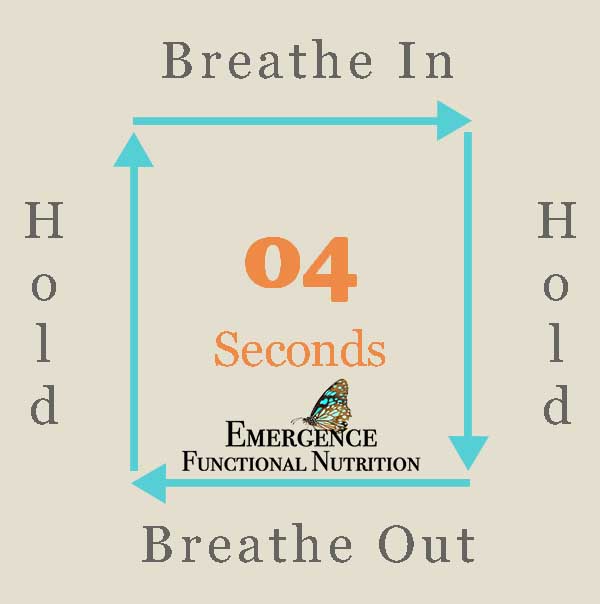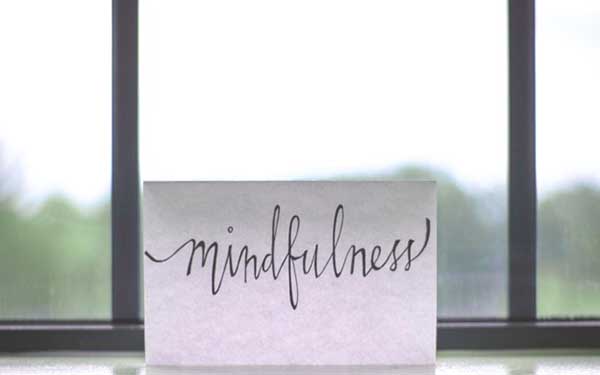
. . . We just need to remember to do it. – Sharon Saltzberg
A Lot Has Been Said About Mindfulness
A lot has been said about mindfulness – not just in the World of Wellness. From women’s magazines to corporate America, “we need to be more mindful” seems to be a recurring mantra. Nearly everyone who reads the articles or attends the Monday Morning Meetings agree, Yes! We must be more mindful! But what is not often talked about is how to implement mindfulness in a practical manner.
In theory, it isn’t all that difficult – Googling the definition for “mindfulness” results with the “mental state achieved by focusing one’s awareness on the present moment, while calmly acknowledging and accepting one’s feelings, thoughts and bodily sensations”. In application, it can be difficult to be mindful – acknowledging your thoughts and feelings without bias – in the midst of real-life events.
By practicing mindfulness in quiet times we can become adept at making calm, objective observations about ourselves and others when difficult situations arise. Having the ability to properly assess a problem, the personalities involved and make unselfish decisions that benefit everyone is essential in building relationships and communicating with others on your team. A reactionary leader is volatile, and seldom builds the “know, like, trust” factor that great leaders are known for.
Here are just a few tips on building your mindfulness:
Just breathe
Practicing breathwork helps keep you calm in trying situations. Being able to control your breathing while under stress helps keep your emotions in-check and can keep you from reacting to the situation instead of responding thoughtfully. Studies also show that regular breathwork helps to lower blood pressure and minimizes hypertension.
While there are many types and styles of breathwork, one of the easiest is Box Breathing. To start, exhale completely. Really blow every bit of air completely out of your lungs.
- Now slowly, but deeply inhale while counting to four, filling your lungs from bottom to top.
- Hold your breath as you count to four.
- Again, count to four as you exhale completely.
- Finally, count to four before you start to take your next breath.
Congratulations! You’ve just completed one round of Box Breathing!
Aim to complete four full rounds per sitting each day for optimal results.

Think on these things

When you add meditation to the mix you are better able to maintain control of yourself and the situation you are in.
The information available today can become quite overwhelming! From politics to health to celebrity to social media to current expectations – the list is endless. It is easy to get caught up in polarizing topics or comparing yourself to unrealistic expectations, causing unnecessary anxiety, stress and frustration.
Instead of dwelling on all the negativity that is constantly on blast, try spending a time in meditation. Just a few minutes each day helps cultivate kindness and gratitude and gives you perspective that reduces stress and anxiety.
If you are a beginner, you may find getting through a two-minute meditation session without being distracted by thoughts flying around in your head nearly impossible. That is completely normal! Beginning with Sound Meditation or Gazing Meditation is a great way to start your practice. Both of these provide your mind with something to focus on without allowing your thoughts to invade this restorative activity.
For Sound Meditation, you’ll need a comfortable place to sit and a few moments to spend time listening. For beginners, that might be a piece of classical or jazz music. Another option is to sit outdoors and focus on the sounds of nature around you.
- Start in a comfortable seated position and focus your attention to the sounds you hear as you relax your body and empty your mind of any thoughts.
- Let your attention be on the music as you begin to slow your breathing. If you are listening to music, you could focus on the beat, a particular instrument or the movement of the music. If nature is your soundtrack, pay attention to the sounds around you – the waves crashing into the shore, the wind blowing through the trees or the birdsong around you.
- As the song ends or your time in meditation comes to an end, bring your awareness back to your body as you wiggle your fingers and toes.
- Once your attention is back on the present, take a deep breath in and exhale completely.
For Gazing Meditation, find something interesting to look at for a few minutes. This is one of my favorite forms of meditation to practice outdoors, letting my attention be on a particular tree or flower.
- As in sound meditation, start in a comfortable seated position where your attention can be on something easily observed.
- Allow your breathing to slow as you focus on the object in front of you. With soft eyes, pay attention to how the candle flickers, how the tree gently sways in the breeze or the activity of the bees pollinating the flower. Pay attention to texture and colors; focus on shape and size.
- As your time in meditation comes to an end, wiggle your fingers and toes; roll your head from side to side.
- With your attention back in the present, inhale and exhale deeply
Meditation is a great way to calm the mind, improve concentration, reduce anxiety and simply unwind at the end of the day.

The last form of mindfulness I want to highlight is my very favorite – Gratitude Meditation.
Gratitude meditation is exactly what is sound like. It is time dedicated to expressing gratitude for the things in your life.
You don’t have to find a particularly comfortable position to get seated in. You don’t have to be alone in the dark. In fact, you can practice gratitude meditation while you are standing in line waiting for your morning cuppa. All that is required is to reflect on the people and things you are thankful for.
Even when things are stressful, you can still be grateful. Exploring gratitude gives you the opportunity for growth. Cultivating feelings of thankfulness gives you a fresh perspective of your daily life and leads to higher levels of well-being, reduced levels of anxiety and a lasting sense of joy.
You can choose one or two things to think about – these could be a person, place or object. Spend time considering why you are thankful. Explore different aspects you might not have considered. Sit in this feeling of gratitude and form a purpose to express your gratefulness in a meaningful way.
Eventually, you may find that you are able to express gratitude in difficult relationships, uncomfortable situations and even for people who you would not consider a “friend”.
Do you practice mindfulness regularly? If so, share how you incorporate it into your life and the results you have experienced with us!

